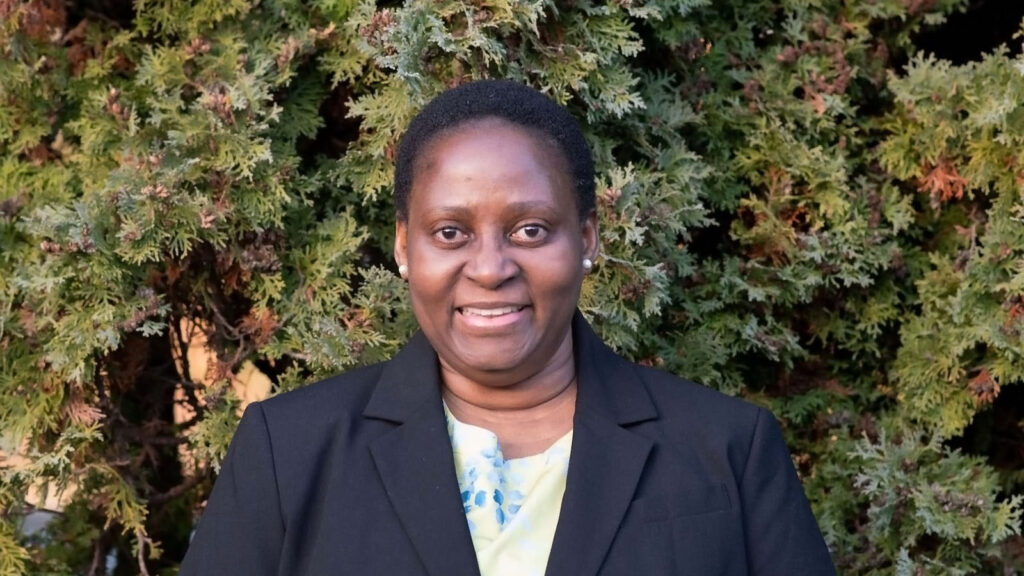Longtime educator and consultant to develop community-led strategies, resources, programs and more.

Dr. Kehinde Olowoyeye has joined the National University of Natural Medicine (NUNM) as its new Director of Access and Inclusive Engagement.
In her new role, Olowoyeye will develop strategic initiatives and implement plans that foster belonging and equitable access at NUNM.
“I’m so excited to come to NUNM,” said Olowoyeye, who earned her Ph.D. in educational policy and planning from the University of Texas at Austin in 2018. “It’s a great privilege seeing the two things I love doing combined in one place—working with students in the school and working on accessibility with staff to make sure we’re being inclusive throughout all our systems.”
Olowoyeye blends her passion for equity and instructional leadership with dedicated research to help inform equitable practices.
Prior to NUNM, she spent nearly a decade working in the education sector as an assistant principal, high school teacher, and ESL instructor. She also served as a consultant and education advisor for organizations looking to expand their cultural competency and promote equal access and inclusion in the workplace.
Some of her future goals include strengthening education and resourcing, cultivating relationships with external organizations, and designing programming and events that can enhance access, engagement, and opportunity at NUNM.
Olowoyeye, a native of Nigeria, has assisted school district and campus committees to expand equity in public education throughout her career, and is the author of The Paradox of Diversity in Public and Private Sectors: Reflection of an African-American Female Educator, a workforce training manual.
Olowoyeye caught up with NUNM to discuss how collaboration, advocacy, and data-driven analysis can help the institution reach its goals.
NUNM: What attracted you to NUNM?
Olowoyeye: I grew up in Nigeria and remember the value of natural medicine from when I was very little. I used to break out in rashes and my parents would use different plants and medicines, specifically the hibiscus flower. Over time, my skin started to get better, and my allergies would clear up with different herbs I was taking. Apart from that, my first degree was in botany. I also received my master’s degree in botany and started lecturing at the University of Lagos. I also worked in Dublin and pursued a research opportunity studying the physiology of maize, looking at ways to help germinate crops during Ireland’s cold months using biodegradable plastics.
How did your early experience in public education influence your career?
I was working towards a master’s degree in educational administration at the University of Texas on a collaborative research project that looked at advanced placement courses. We saw that there were fewer underrepresented groups in those classes and began sending out questionnaires to the community to provide feedback and perspective. We found the way the program was being marketed wasn’t meeting the needs of our audience and community. Information sessions were offered at times when it was convenient for the school but didn’t take into account that many parents worked two or more jobs and were often available only for evening and weekend sessions. When you take advanced placement courses at an early stage, even from middle school, it sets students up for success so that causes a gap. We also found paying for AP exam courses before college could actually save parents money. This is what really got me into educational leadership and policy, understanding that some policies stop things from happening and have unintended consequences if not implemented well. This was the beginning of me joining an equity task force and making the call for administrators to identify support systems that could be put in place that could help teachers, students and parents—everyone—achieve success.
How will you approach the new role and lead initiatives with NUNM?
This kind of work cannot be done in isolation. It’s not a standalone problem. You need a village. You need everyone to be involved in one way or another. The best way to move forward is to create a framework that fits into the organization, with goals that align back to different parts of the institution. From there, you begin working with the community and bring people in on an equity task force. Having pillars to work with, such as ‘education’ or ‘leadership’, can help those who are passionate about each pillar to join subcommittees to examine areas of opportunity where things can move forward. It’s about designing a road map and key metrics and then making sure we’re measuring our impact and coming back to report our progress. It’s an effort that takes engaging with the whole community.
How do you see natural medicine, access, and engagement all fit together?
When we talk about natural medicine, we’re talking about medicine that are indigenous to different cultural groups. Much benefit can come from further opening up spaces for students who identify with those indigenous practices or faculty that represent them. We want to make it clear we celebrate different perspectives, opinions and knowledge. This is where innovation happens and enriches the environment in a way that’s just awesome. I am also collaborating with the SGA and different affinity groups on campus, such as the BIPOC, LGBTQIA+ Affinity Groups, to plan calendar events so the community is aware of what’s happening within different ethnic groups represented in these communities. I am currently working with students in creating more affinity groups, such as an NUNM Students with Disability Support Network and NUNM International Students’ Club.